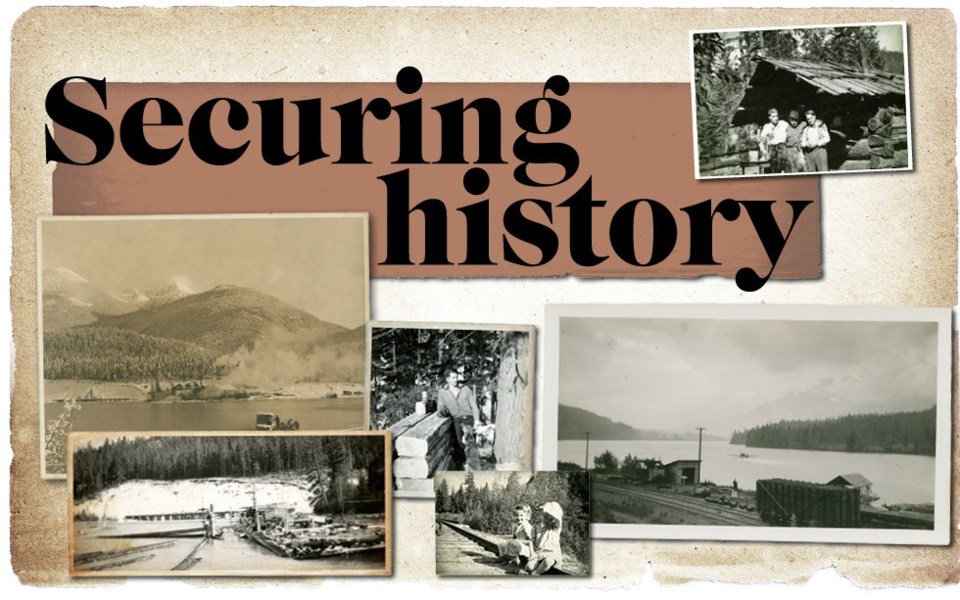When the Resort Municipality of Whistler purchased the Parkhurst lands in late March, it wasn't just buying 81 hectares of land — it was securing a unique piece of Whistler's sometimes scattered history.
The Parkhurst lands represent an era of Whistler's past that is absent in the luxurious high-rise hotels and multi-million-dollar homes of today.
The lands on the northeast shore of Green Lake — and the other lakes of the valley — were settled by pioneers and supported by the roughneck logging industry.
"There was quite a settlement," the late Whistler icon and historian Florence Petersen told Pique in 2000, of the area's logging days.
"There were homes, bunk houses, a community hall and at one time there was even a little store."
A comprehensive history of the land is difficult to piece together — ("Parkhurst is a bit of a mysterious place even for us, as we don't have a ton of stuff on it in the archives — only a few small donations from people who lived there," said Whistler Museum's Alyssa Bruijns in an email) — but the story is given some light by photographs, transcripts and letters held by the Whistler Museum and Archives.
In a transcript from a 2011 interview with then-curator Sarah Drewery, Norm and Doreen Barr talk about how Norm's father and uncles purchased the lands in 1926 from the Parkhursts, whose first names they couldn't recall.
"It was always just Mr. and Mrs.," Doreen said.
The Barr brothers had been logging near Mission until they ran out of available timber. The Parkhurst lands became their next venture.
"They built the camp, built the houses, built the railroad, put the railroad in, put the log camp in," Norm said. "They did everything."
But by the end of the decade the operation became unsustainable.
"They lost the whole thing in the Depression, as I recall," Norm said. "I don't know exactly the year of the closing but I don't think they opened the mill in 1930. Their receiver took over 'cause they couldn't sell their lumber for enough to pay the freight."
The lands were sold to Byron Smith and B.C. Keeley in 1932, but Norm's parents lived at Parkhurst until 1938.
Under Keeley, Denis DeBeck was brought on to manage the new operation. The "DeBeck Collection" of photos, several of which have been reprinted here, is perhaps the best visual representation of the area during the late 1930s.
But the most illuminating account of what Whistler life was like pre-Whistler comes from a 1989 letter written by Eleanor Kitteringham, who lived on the Parkhurst lands with her husband and three children from 1948 to 1956.
Titled "Our Family Life at Parkhurst," the letter paints a vivid picture of the day.
Groceries were delivered from Vancouver every second Thursday by rail.
The family's annual income was $2,200.
For refrigeration, ice blocks were cut from the lake and stored in sawdust — when put in the old-fashioned ice box the ice would almost last the whole summer.
Entertainment came in the way of radio programs and broadcasted horse races, nightly games of cribbage and musical evenings with the neighbours, two miles on either side of the Kitteringham's cozy cabin.
"We formed a little band called the Valley Ramblers. We played for benefit dances around the country to raise money for the Squamish Hospital," Eleanor wrote.
"We played canasta, drank homebrew. Pretty hard to have to wake the kids and walk the two miles back.
"Those nights were beautiful though, when you can touch the stars and everything sparkles and glistens and that 'crunch' of dry snow."
When the mill closed down in 1956, the family moved to Vancouver.
"Life was very peaceful, no traffic, crowds, etc., beautiful country all around us. But it wasn't that easy," Eleanor wrote.
"We could have bought the bush where we lived on Green Lake at $5 an acre (in 1949). Who would have thought, then, that anything like Whistler and Blackcomb would develop."
After the highway was built in the early 1960s, Whistler Mountain opened in the winter of 1965-66 and development began in earnest to the south of Green Lake, the Parkhurst lands became a haven for ski bums and squatters — and the site of the iconic Toad Hall photo seen throughout modern-day Whistler.
"That was the second incarnation of Toad Hall, the same Toad Hall as the one with the photograph with all the naked people, of which I am not one," said Mayor Nancy Wilhelm-Morden with a laugh, shortly after the acquisition of the lands was announced in late March.
The municipality is not in any rush to develop the lands — given the remoteness of the area, the servicing costs to do so would be cumbersome.
Instead, plans for the area will be developed over time, with an eye towards including green space, a waterfront park and a community heritage site.
"There are some buildings that are still there, but they're in very dilapidated conditions. So we will have to take our time to figure out if any of those buildings can be saved," Wilhelm-Morden said.
"It's going to be exciting to plan for this very large piece of property and what we might want to see there.
"I'm thrilled... acquiring this much land, and acquiring this historic site."
To learn more about Whistler's unique history, you can visit the Whistler Museum at 4333 Main Street or check them out online at www.whistlermuseum.org.
As a non-profit society, the Museum relies on donations from individuals and organizations to stay operating — anyone interested in contributing can find more info at www.whistlermuseum.org/donations.




